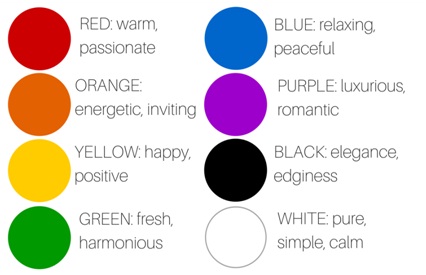
Symbolic, emotion-based tests, on the other hand, look at feelings and emotions and therefore don’t lie but speak profound truth. This psychological mechanism may come into play unconsciously or it may be the result of a conscious intention to manipulate one’s image in the eyes of others.įor example, if someone applies for a position as a nurse or a position as police officer, the same person will give in good faith a different answer to the same question. The person answering the questions will always try to present itself in a favorable light, answering questions in a manner that will be viewed favorably by others.
#Color moods test series#
THE PERSONALITY COLOR TEST TELLS THE TRUTH ABOUT PEOPLE.Ĭlassic personality tests based on a series of questions suffer from the social desirability bias. By linking our emotions, they reveal who we really are. Our emotion-based personality tests retrace the path of the emotion and thus expose their essence. Yet we are the fruit of our emotions, since they determine our preferences, what we are attracted to, what we choose and what we decide.

When we find ourselves in the presence of symbolic objects, these objects generate emotions that make us either feel rejected or supported. Our emotion-based personality tests are the result of scientific research carried out over the course of 20 years by a team of certified clinical psychologists and mathematicians, led by Thierry Leroy, clinical psychologist and psychoanalyst. THE PERSONALITY COLOR TEST TRANSLATES YOUR EMOTIONS. doi:10.Why TESTCOLOR ? because emotions always tell the truth
:max_bytes(150000):strip_icc()/moodring-56a12aac3df78cf7726808d1.png)

Color preferences in infants and adults are different. Taylor C, Schloss K, Palmer SE, Franklin A. Color and psychological functioning: the effect of red on performance attainment. doi:10.1002/col.20597Įlliot AJ, Maier MA, Moller AC, Friedman R, Meinhardt J. Colour psychology and colour therapy: Caveat emptor.
#Color moods test professional#
The dark side of self- and social perception: black uniforms and aggression in professional sports. Perception of the color red enhances the force and velocity of motor output. Understanding color associations and their effects on expectations of drugs' efficacies. Impact of chromotherapy on professional quality of life in intensive care unit nurses: a randomized controlled trial. The mechanistic basis of chromotherapy: Current knowledge and future perspectives. Universal patterns in color-emotion associations are further shaped by linguistic and geographic proximity. Jonauskaite D, Abu-Akel A, Dael N, et al. The application of color psychology in community health environment design. Color and psychological functioning: a review of theoretical and empirical work. Gray: The experts suggest that people who drive gray cars don't want to stand out and instead prefer something more subtle.Įlliot AJ.Yellow: According to the experts, driving a yellow vehicle might mean you are a happy person in general and perhaps a bit more willing than the average person to take risks.Driving a blue car or SUV might indicate that you are dependable and trustworthy. Blue: People often describe blue as the color of stability and safety.Red: Red is a bold, attention-getting color, so preferring this type of car might mean you want to project an image of power, action, and confidence.High-tech products are often silver, so the color is often seen as new, modern, and cutting-edge. Silver: It's the third most popular vehicle color and is linked to a sense of innovation and modernity.

People often describe the color as sexy, powerful, and mysterious.


 0 kommentar(er)
0 kommentar(er)
